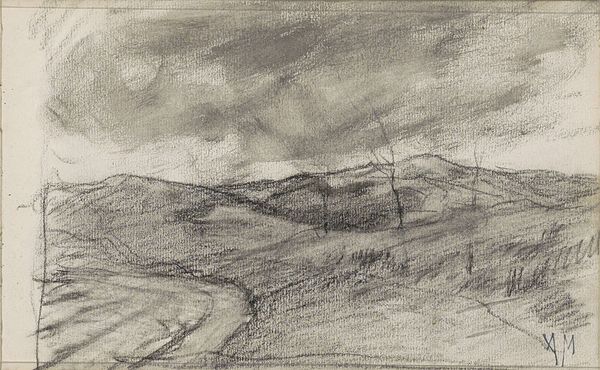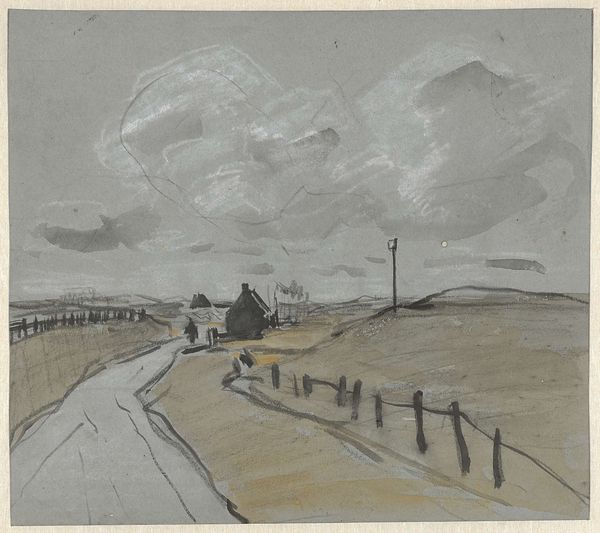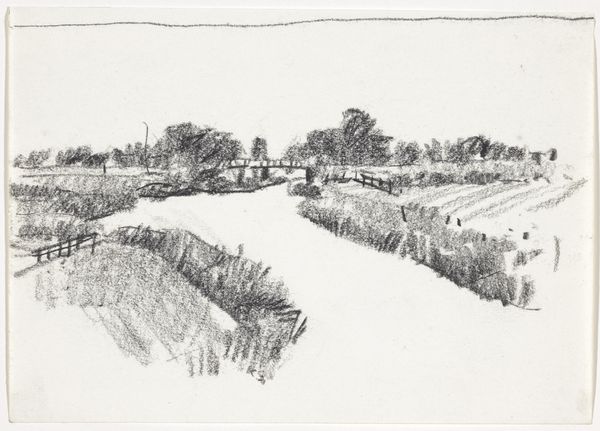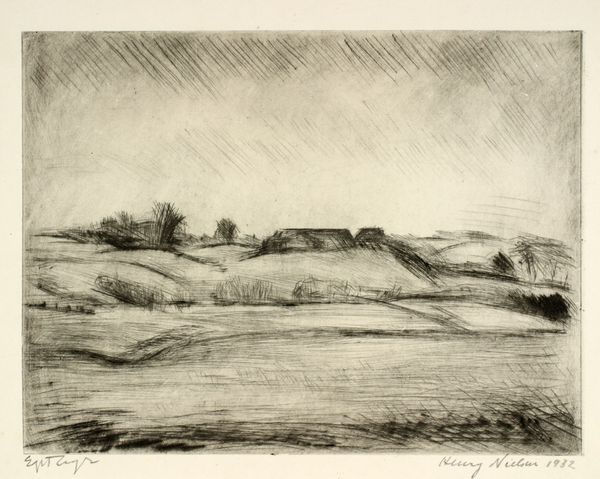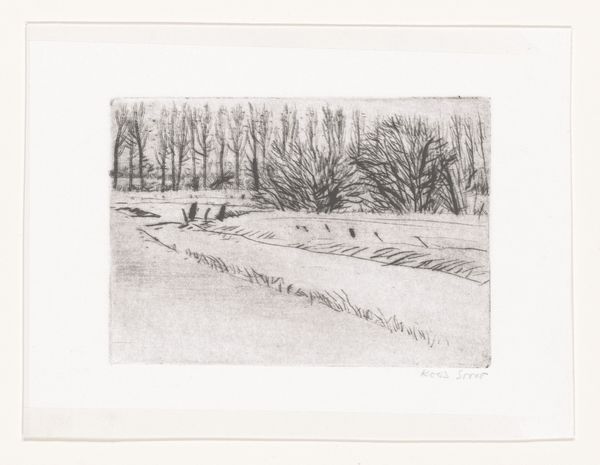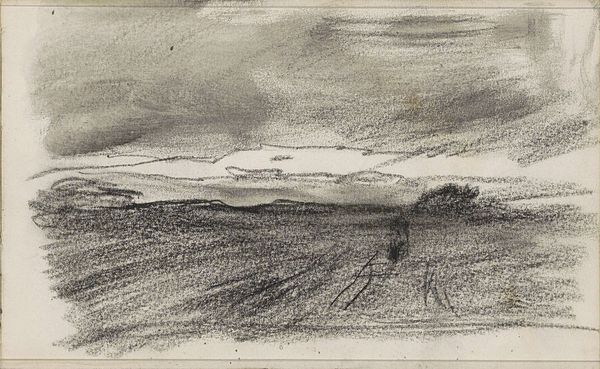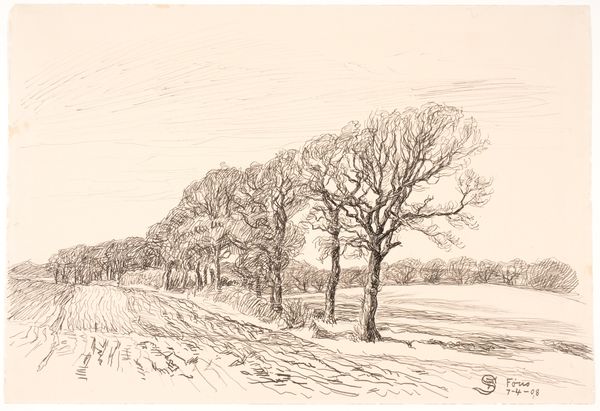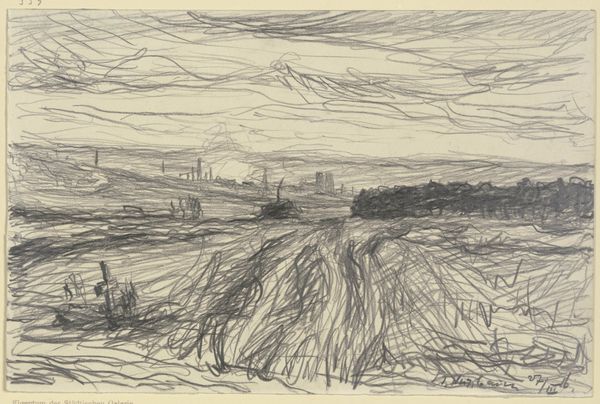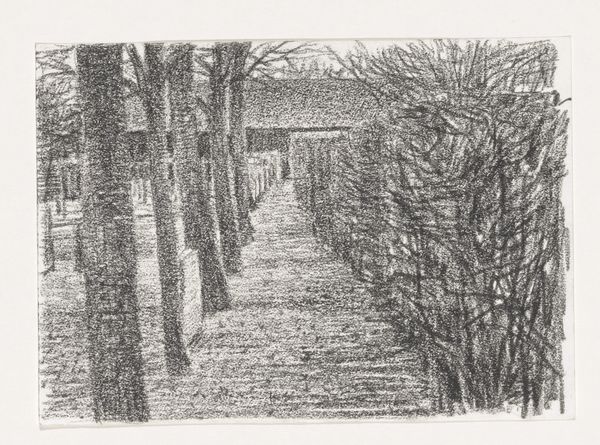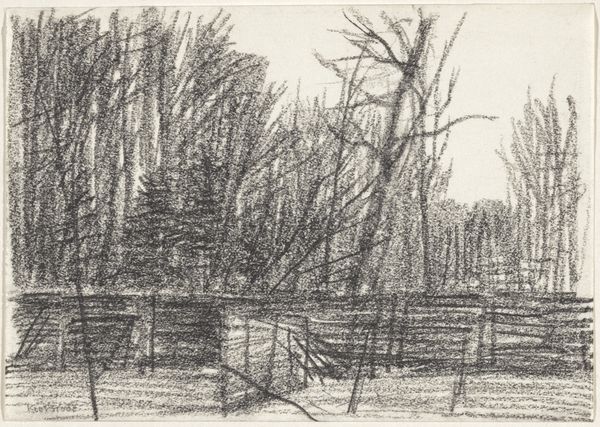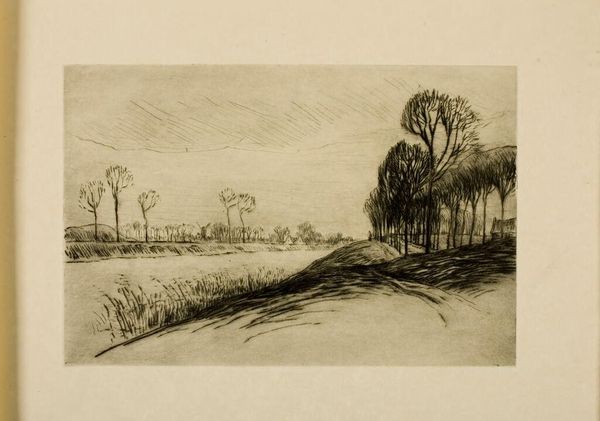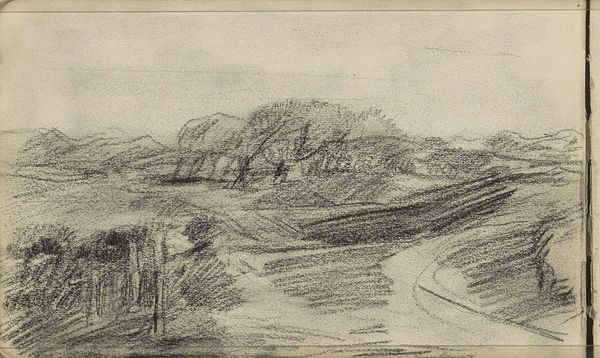
drawing, graphite
#
drawing
#
landscape
#
road
#
graphite
#
realism
Dimensions: height 237 mm, width 314 mm
Copyright: Rijks Museum: Open Domain
Curator: Alright, let's discuss "Heuvellandschap met weg en spoorlijn," or "Hill Landscape with Road and Railway," a drawing by Henk Henriët, made between 1931 and 1935. You get a real sense of place in this graphite drawing. Editor: Immediately, I’m struck by how much gray there is. It gives it this melancholic feel, like a slightly overcast day in a quiet part of the countryside. The landscape is there but tamed somehow. Curator: Yes, that subdued palette definitely contributes to the mood. Henriët, for me, seems almost preoccupied with depicting not just the scene but also the hand that shapes it. See how the road and railway seem to carve through the landscape. I find myself drawn to the simple fact that this drawing, created with just graphite on paper, brings to life a network of social and economic factors at that time. The graphite itself, the industrial product, stands for something! Editor: I like that! It makes me think about accessibility. The railroad, telephone poles - it’s as though the artist were keen to map our interactions with nature's resources. Look at the level of detail with which the artist approaches both man-made infrastructure and organic shapes. It all serves the function of transport or communication or extraction in some way. Curator: Precisely. Henriët gives equal weight to both these elements and in so doing perhaps expresses what's gained and what’s lost by human "progress". The rhythmic placement of telephone poles echoes the lines of trees. Editor: Yes, and how the medium relates back to that! Consider the manual labor involved in producing graphite in the first place, with something of which the artist uses it, the making process comes full circle, becoming both its object of focus and artistic method itself. I appreciate the connection it creates. Curator: Absolutely. The starkness of the drawing style—realistic but slightly detached—allows the viewer to engage with the materials and consider their function. I appreciate the honesty in that. It feels deeply authentic. Editor: For me, that understated gray quality reveals a sort of truth, reminding us that landscapes aren't only something you "see." This kind of gray, monochrome work challenges ideas about what counts as "real." Curator: I concur. It has this wonderful effect. Almost as if it says the reality exists beyond how it looks—and also what goes into representing its shape. Editor: Very well. I must add, by delving into how it represents our presence in the world around us makes "Hill Landscape" deeply relevant even now.
Comments
No comments
Be the first to comment and join the conversation on the ultimate creative platform.
